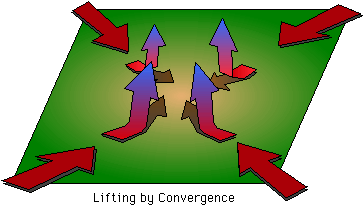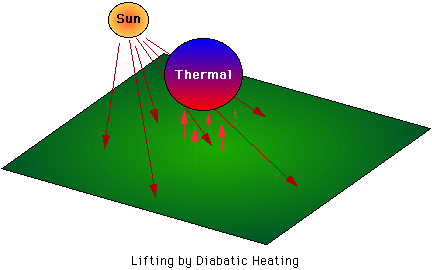
Convergence, as we discussed in Session 4, is another mechanism that can force air near the surface to rise. If winds blowing in different directions meet each other, the different moving air masses become an obstacle to one another. The air converges and has no place to go but upwards. At the surface air flows inward to the center of low pressure where it converges and then rises. Convergence also occurs when air flowing over a smooth surface suddenly hits a rougher surface and slows due to increased friction. The air piles up at the rough surface where the friction is greater, and this causes some of the air to move in a vertical direction.

We have mentioned many times how the radiation emitted by the earth heats the air at the surface. When the warm air rises, it may cool adiabatically, meaning without the exchange of heat between the parcel and the surrounding air. The temperature drops in response to the change in pressure. In contrast, we refer to the heating that occurs by the radiation as diabatic heating. Diabatic is the opposite of adiabatic. In the case of diabatic heating, the temperature of the air changes, at least in part, in response to the heat that is added by radiation. The air expands as it warms, making it less dense than its environment. Because less dense materials are more buoyant, the warmer air rises producing a thermal.

 The Shodor
Education Foundation, Inc.
The Shodor
Education Foundation, Inc.